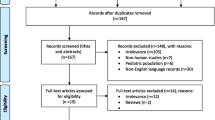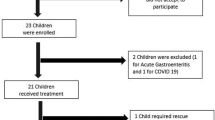Abstract
Purpose
Recent studies showed that sacral nerve stimulation might be an effective treatment option for chronic anal fissure. We aimed to evaluate the efficacy of transcutaneous electrical nerve stimulation as a noninvasive alternative treatment for chronic anal fissure by stimulating the sacral nerve in the ankle via the posterior tibial nerve.
Method
In this prospective study, transcutaneous electrical nerve stimulation was applied for 10 days in addition to conventional medical treatment in ten patients. Wexner's constipation score, visual analog scale for pain, quality of life (Short Form-36), Hamilton anxiety and depression scores, symptom relief, compliance, fissure healing, and side effects were evaluated before and after treatment (days 0, 5, and 10).
Results
Ten patients (eight females/two males) with a mean age of 50.7 ± 18.5 years were enrolled in the study. Pain and bleeding resolved in all patients 2 days after the treatment, and mucosal healing was observed in six patients 10 days after the treatment. Wexner's constipation and visual analog scale scores for pain decreased significantly (p = 0.001 and p = 0.002, respectively). Hamilton anxiety and depression scores decreased as well (p = 0.001 and p = 0.01, respectively). Among Short Form-36 subscales, only mental health score increased significantly (p = 0.003). One patient underwent surgery at follow-up due to recurrence of symptoms, and rubber band ligation was applied to another patient who had internal hemorrhoidal rectal bleeding at the end of 10 days.
Conclusions
Transcutaneous electrical nerve stimulation application to the posterior tibial nerve has the potential to be an alternative treatment option for chronic anal fissure patients who seek noninvasive treatment modality.
Similar content being viewed by others
References
Barton J (2002) Nitroglycerin and lidocaine topical treatment for anal fissure. RxTriad 5(4):1–2
Poh A, Tan KY, Choen FS (2010) Innovations in chronic anal fissure treatment: a systematic review. World J Gastrointest Surg 2(7):231–241
Yakovlev A, Karasev SA, Dolgich OY (2011) Sacral nerve stimulation: a novel treatment of chronic anal fissure. Dis Colon Rectum 54:324–327
Nelson RL, Thomas K, Morgan J, Jones A (2012) Non surgical therapy for anal fissure. Cochrane Database Syst Rev 2:CD003431, Review. PubMed PMID:22336789
Nelson RL, Chattopadhyay A, Brooks W, Platt I, Paavana T, Earl S (2011) Operative procedures for fissure in ano. Cochrane Database Syst Rev 9(11):CD002199, Review. PubMed PMID: 22071803
Patti R, Territo V, Aiello P, Angelo GL, DiVita G (2012) Manometric evaluation of internal anal sphincter after fissurectomy and anoplasty for chronic anal fissure: a prospective study. Am Surg 78(5):523–527
Schornagel IL, Witvliet M, Engel AF (2012) Five-year results of fissurectomy for chronic anal fissure: low recurrence rate and minimal effect on continence. Colorectal Dis 14(8):997–1000
Abramowitz L, Bouchard D, Souffran M et al (2013) Sphincter-sparing anal-fissure surgery: a 1-year prospective, observational, multicentre study of fissurectomy with anoplasty. Colorectal Dis 15(3):359–367
Nyam DC, Pemberton JH (1999) Long-term results of lateral internal sphincterotomy for chronic anal fissure with particular reference to incidence of fecal incontinence. Dis Colon Rectum 42:1306–1310
Casillas S, Hull TL, Zutshi M, Trzcinski R, Bast JF, Xu M (2005) Incontinence after a lateral internal sphincterotomy: are we underestimating it? Dis Colon Rectum 48(6):1193–1199
Renzi A, Izzo D, Di Sarno G et al (2008) Clinical, manometric, and ultrasonographic results of pneumatic balloon dilatation vs. lateral internal sphincterotomy for chronic anal fissure: a prospective, randomized, controlled trial. Dis Colon Rectum 51(1):121–127
Shao WJ, Li GC, Zhang ZK (2009) Systematic review and meta-analysis of randomized controlled trials comparing botulinum toxin injection with lateral internal sphincterotomy for chronic anal fissure. Int J Colorectal Dis 24(9):995–1000
Sinha R, Kaiser AM (2012) Efficacy of management algorithm for reducing need for sphincterotomy in chronic anal fissures. Colorectal Dis 14(6):760–764
Schreiner L, dos Santos TG, Knorst MR, da Silva Filho IG (2010) Randomized trial of transcutaneous tibial nerve stimulation to treat urge urinary incontinence in older women. Int Urogynecol J 21(9):1065–1070
Queralto M, Portier G, Cabarrot PH et al (2006) Preliminary results of peripheral transcutaneous neuromodulation in the treatment of idiopathic fecal incontinence. Int J Colorectal Dis 21:670–672
Veronique V, Henri D, Sabine R, Francois M (2010) Transcutaneous electrical posterior tibial nerve stimulation for faecal incontinence: effects on symptoms and quality of life. Int J Colorectal Dis 25:1017–1020
Agachan F, Chen T, Pfeifer J, Reissman P, Wexner SD (1996) A constipation scoring system to simplify evaluation and management of constipated patients. Dis Colon Rectum 39:681–685
Corapcioglu A, Aydemir A, Yildiz M, Esen A, Koroglu E (1999) Structured clinical interview for DSM IV Axis I disorders. Hekimler Yayin Birligi Turkish, Ankara
Hamilton MA (1960) Rating scale for depression. J Neurol Neurosurg Psychiatry 23:56–62
Akdemir A, Orsel S, Dag I (1996) Reliability and validity of Turkish version of Hamilton Depression Scale. Journal of Psychiatry Psychology Psychopharmacology 4:251–259, Turkish
Hamilton M (1959) The assessment of anxiety states by rating. Br J Med Psychol 32:50–55
Yazici MK, Demir B, Tanriverdi N, Karaoglu E, Yolac P (1998) Interrater reliability and validity of Turkish version of Hamilton Anxiety Scale. Turkish Journal of Psychiatry 9:114–117
Ware JE, Sherbourne CD (1992) The MOS 36-item short-form health survey (SF-36). I. Conceptual framework and item selection. Med Care 30:473–483
Kocyigit H, Aydemir O, Olmez N et al (1999) Reliability and validity of Turkish version of Short Form 36 (SF-36). İlaç ve Tedavi Dergisi 12:102–106, Turkish
Demiral Y, Ergor G, Unal B et al (2006) Normative data and discriminative properties of short form 36 (SF-36) in Turkish urban population. BMC Publ Health 9(6):247
Yakovlev A, Karasev SA (2010) Successful treatment of chronic anal fissure utilizing sacral nerve stimulation. Wisconsin Medical Journal 109(5):279–281
Melzack R, Wall PD (1965) Pain mechanisms: a new theory. Science 150:971–975
Kathleen A (2003) TENS basic science mechanisms and clinical effectiveness. J Pain 4:109–121
Wilson JK, Sevier TL (2003) A review of treatment for carpal tunnel syndrome. Disabil Rehabil 25:113–119
Papanicolaou GD, McCabe SJ, Firrell J (2001) The prevalence and characteristics of nerve compression symptoms in the general population. J Hand Surg Am 26:460–466
Schouten WR, Briel JW, Auwerda JJ (1994) Relationship between anal pressure and anodermal blood flow: the vascular pathogenesis of anal fissures. Dis Colon Rectum 37:664–669
George AT, Kalmar K, Sala S et al (2013) Randomized controlled trial of percutaneous versus transcutaneous posterior tibial nerve stimulation in faecal incontinence. Br J Surg 100:330–338
George AT, Vaizey CJ (2013) Percutaneous posterior tibial nerve stimulation for fecal incontinence: are we all reading from the same page? Dis Colon Rectum 56:e328–e329
Mentes BB, Yüksel O, Aydin A, Tezcaner T, Leventoglu A, Aytaç B (2007) Posterior tibial nerve stimulation for faecal incontinence after partial spinal injury: preliminary report. Tech Coloproctol 11:115–119
van der Pal F, van Balken MR, Heesakkers JP, Debruyne FM, Bemelmans BL (2006) Percutaneous tibial nerve stimulation in the treatment of refractory overactive bladder syndrome: is maintenance treatment necessary? BJU Int 97:547–550
Nuhoglu B, Fidan V, Ayyildis A, Ersoy E, Germiyanoglu C (2006) Stoller afferent nerve stimulation in woman with therapy resistant over active bladder; a 1 year follow-up. Int Urogynecol J17:204–207
Thorsteinsson G, Stonnington HH, Stilwell GK et al (1978) The placebo effect of transcutaneous electrical stimulation. Pain 5:31–41
Vaizey CJ, Kamm MA, Roy AJ, Nicholls RJ (2004) Double-blind crossover study of sacral nerve stimulation for fecal incontinence. Dis Colon Rectum 43:298–302
Madalinski MH (2011) Identifying the best therapy for chronic anal fissure. World J Gastrointest Pharmacol Ther 2(2):9–16
Conflict of interest
The authors have no conflict of interest to declare.
Author information
Authors and Affiliations
Corresponding author
Rights and permissions
About this article
Cite this article
Altunrende, B., Sengul, N., Arisoy, O. et al. Transcutaneous electrical posterior tibial nerve stimulation for chronic anal fissure: a preliminary study. Int J Colorectal Dis 28, 1583–1589 (2013). https://doi.org/10.1007/s00384-013-1743-4
Accepted:
Published:
Issue Date:
DOI: https://doi.org/10.1007/s00384-013-1743-4




